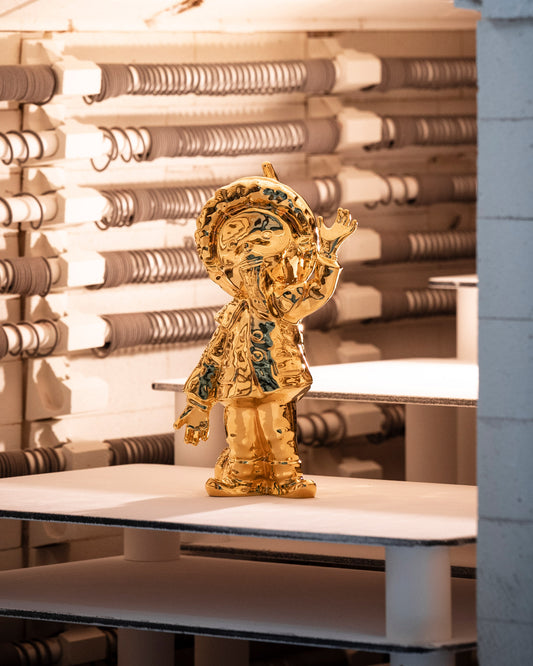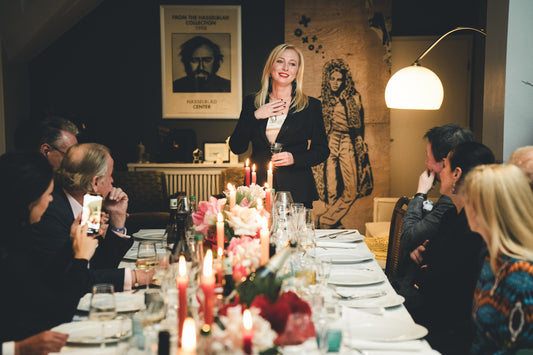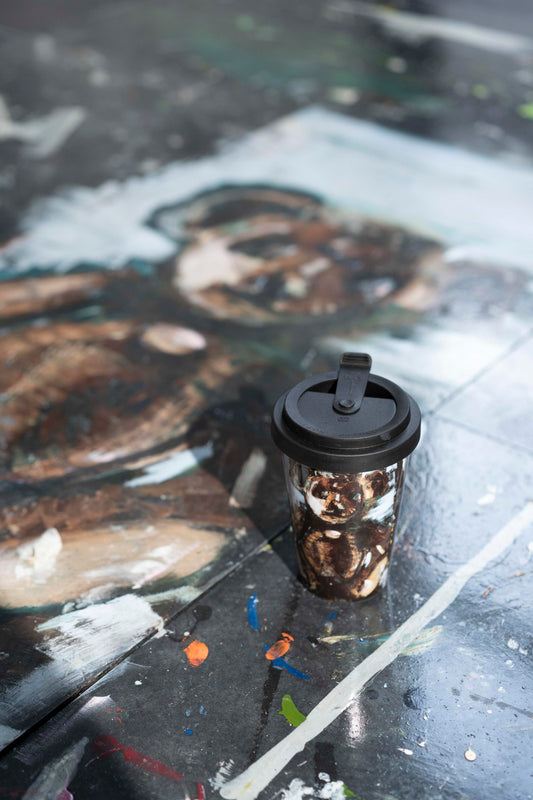HOW MARGUERITE FRIEDLAENDER SHAPED THE KPM
The work of BAUHAUS student Marguerite Friedlaender catapulted KPM into the present - and brought about a turnaround in German porcelain history.
Picture: ©Archive Burg Giebichenstein - University of Art and Design Halle
Over a hundred years ago, the Bauhaus revolutionized the world of design. It countered the exuberant floral ornamentation of Art Nouveau with something new. Designs were now created in the style of New Objectivity and in the spirit of functionality - timeless, clear and straightforward houses, furniture made of cool tubular steel, objects in primary colors. There was a creative spirit of optimism. Even at KPM, which was then called the Berlin State Porcelain Manufactory. In 1929, its new director, Günther von Pechmann, began his work as a visionary. An economics graduate and member of the Deutscher Werkbund, he reorganized the product range of the traditional Berlin manufactory under the slogan "Porcelain for the new home". The porcelain was to be combinable and thus match the new architecture, the new way of furnishing and the new requirements of modern kitchens.
As a pioneer, the Berlin manufactory broke completely new conceptual ground. This was because the German porcelain industry had hardly felt the spirit of optimism of the Bauhaus until then. The appearance of plates, cups and tea services remained traditional even in the 1920s. When it came to porcelain, people preferred to stick with the good old things. Tableware was a status symbol, and ornamental relief decorations and floral patterns continued to set the tone.
Günther von Pechmann looked for a suitable partner for his planned modernization of KPM. Immediately after taking office, he initiated a collaboration with Burg Giebichenstein in Halle, a school of arts and crafts where former Bauhaus students taught - such as Marguerite Friedlaender.
The daughter of a Jewish-German silk manufacturer and an Englishwoman, she trained at the state Bauhaus and then worked with Gerhard Marcks and Max Krehan in the associated ceramics workshop in Dornburg.
In 1925, she moved with Marcks to Burg Giebichenstein, where she took over the ceramics class, the only woman in Germany in such a position at the time.
In 1929, the then 33-year-old was put in charge of the newly founded Burg porcelain workshop, which was intended as an artistic test laboratory for the industry. Craftsmanship and art were to merge with each other - in the spirit of the Bauhaus - and
be serially producible. At the same time, the cooperation with KPM began. Günther von Pechmann commissioned Marguerite Friedlaender to design modern and contemporary tableware. After just a few months, she presented the first designs for the pure white, undecorated HALLE'SCHE FORM coffee and mocha service. The cylindrical pot with a straight spout was particularly striking.
In just under two years, a tea service was added to the HALLE'SCHE FORM series, so delicate that the KPM trademark, the blue sceptre, shone through the base of the cup. This was followed by the "Burg Giebichenstein" dinner service, the "Hermes" restaurant tableware for Halle Airport and numerous series of vases, including her HALLE vase - conical at the top, bulbous at the bottom. The design of Friedlaender's "aviator cup", in which the mirror surface is cut out in the lower bowl so that the cup can stand securely even in turbulence, was created in 1932 and was produced until 1935.
Friedlaender designed on the basis of geometric shapes and straight lines. She put her models together like an architect. However, she never denied her ceramic origins. Her designs do not appear constructed, but rather, as is usual with the turning technique, raised.
In close collaboration with KPM, Friedlaender modified her models and adapted them to the production conditions for serial production. Her work was groundbreaking for the entire German porcelain industry. Her work was praised in the Weimar Republic as the epitome of innovative, radically functional utility ceramics.
However, despite her success and work, the avant-garde designer Friedlaender never achieved the level of fame of her colleague Trude Petri, who was working as a porcelain designer at KPM at the same time and designed the pure white and undecorated URBINO tableware shortly after Friedlaender's "Hallescher Form".
One reason for this may be that Petri's models in the New Objectivity style were sometimes even more radical. In addition, Friedlaender never sought publicity: "Publicity, fame and the limelight are as fleeting as clouds, but a good vessel will last for centuries," she wrote in her autobiography published in 1973.
Friedlaender learned how quickly fame can fade in 1933, when the National Socialists came to power and her career as a porcelain designer in Germany came to an abrupt end. As a Jew, she was personally advised by the mayor of Halle to resign from her teaching position at Burg Giebichenstein. She went to the Netherlands with her husband, the ceramist and Bauhaus student Franz Rudolf Wildenhain, and opened a small but successful pottery studio. She then emigrated to the USA alone in 1940. Shortly afterwards, when she was invited by a board member of the Museum of Modern Art in New York, the butler served tea in her own KPM service - which nobody knew except Friedlaender.
Friedlaender later moved to California, taught at colleges and joined a colony of artists working on a secluded farm. When her husband followed her to the USA a few years later, the marriage quickly fell apart. And the artists' colony also fell apart shortly afterwards. Friedlaender remained alone on the farm, offering courses for young ceramists in the summer - and enjoying the solitude the rest of the time.
She died in 1985 at the age of 89 - without fame or the limelight. However, some of Friedlaender's designs for KPM, such as the HALLE vase series and her HALLE'SCHE FORM mocha service, have outlived her and are still produced today.
The HALLE vases
This text was first published by Sandra Winkler in our 2nd customer magazine WEISS. The latter picture comes from the KPM archive.


